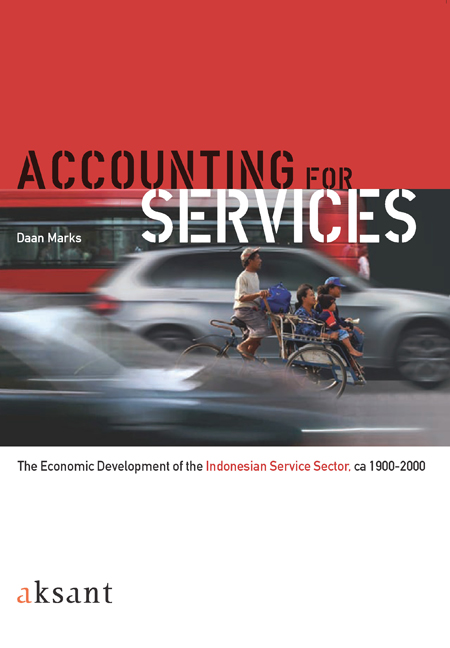Book contents
- Frontmatter
- Contents
- List of Tabels
- Acknowledgement
- 1 Introduction
- 2 National Accounting for Services in Indonesia
- 3 The Development of the Indonesian Service Sector: A Quantitative Analysis
- 4 Roads to Riches? Transportation and Economic Development in Indonesia
- 5 Involution and Growth: the Ambiguous Role of the Trade Sector in the Economic Development of Indonesia
- 6 Unity or Diversity?: Market Integration through Trade and Transport
- 7 Conclusions
- Appendices
- References
Appendix 4 - National Accounting for Housing
Published online by Cambridge University Press: 19 January 2021
- Frontmatter
- Contents
- List of Tabels
- Acknowledgement
- 1 Introduction
- 2 National Accounting for Services in Indonesia
- 3 The Development of the Indonesian Service Sector: A Quantitative Analysis
- 4 Roads to Riches? Transportation and Economic Development in Indonesia
- 5 Involution and Growth: the Ambiguous Role of the Trade Sector in the Economic Development of Indonesia
- 6 Unity or Diversity?: Market Integration through Trade and Transport
- 7 Conclusions
- Appendices
- References
Summary
In the SNA the contribution of house property to national income is taken as equivalent to the net rental income of dwellings. No distinction is made between owneroccupied houses and rented houses. The rental value of shops and other industrial buildings is not counted as housing, but as part of the product of the respective industries.
Data on the number of houses can be obtained from the population censuses. These give us the average size of a household. Combining these with population estimates gives a time-series of the number of houses. Unfortunately, we only have fragmentary information on rents, which makes it impossible to construct timeseries.
A source that provides some information on housing rents is a survey by the Centraal Kantoor van de Statistiek (CKS) in 1928 on 314 urban households. The relevant results are presented in table A4.1. In 1939 CKS published a study on 95 labourer households in Jakarta. This survey revealed that rents for these labourers, which can be classified as largely unskilled labourers, varied between 0.50 and 5.00 guilders (CKS 1939: 12).
Ibrahim and Weinreb (1957) conducted a study on living expenditures in Jakarta in 1953. In a sample of 250 urban households they found an average rent for civil servants of Rp 16.00, for a labourer of Rp 9.70 and for a trader Rp 1.40 (see table A4.3).
Moreover in a recent paper by Colombijn and Barwegen (2005) give some detailed information on rents in Indonesian cities between 1930 and 1960. Their findings can be found in table A4.2. They found that cheap houses without brick walls, sometimes referred to as ‘indigenous houses’, had rents up to 20-30 guilders. Very cheap houses in Medan, Bandung, Semarang, Malang and Surabaya brought in between 1.00 and 6.00 guilders. Dwellings of 1.00 and 2.00 guilders were usually meant for single coolies. Rents for middle-class residents were in the range of 20-80 guilders. Upper-class houses were 80 or more guilders.
Because the information on rents is limited I chose to estimate value added in the housing sector for a base year, namely 1930. For the years 1975, 1980, 1985, 1990, 1995 and 2000 I relied on estimates from the i-o tables.
- Type
- Chapter
- Information
- Accounting for ServicesThe Economic Development of the Indonesian Service Sector, ca 1900–2000, pp. 293 - 298Publisher: Amsterdam University PressPrint publication year: 2009



